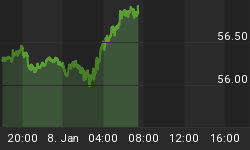The historic quest to rekindle the human exploration and colonization of space has been spearheaded by two tech moguls who view space as the next entrepreneurial frontier: Jeff Bezos and Elon Musk.
Last year, Bezos’ Project Kuiper scored a big win after the FCC issued the green light for its $10B internet satellite plan that aims to provide high-speed Internet service to low-density areas.
However, it will be Musk’s SpaceX, and not Bezos’ Blue Origin, that will take U.S. astronauts back to the surface of the moon for the first time since 1972.
SpaceX has just won a $2.89 billion NASA contract to build the agency's next spacecraft to land astronauts on the moon, beating out Bezos's company and others, despite Blue Origin partnering with defense and aerospace stalwarts such as Lockheed Martin (NYSE:LMT), Northrop Grumman (NYSE:NOC) and Draper.
The contract vaults SpaceX into the top tier of NASA's most trusted partners.
Space rivalry
Over the years, Musk and Bezos have waged war--largely on social media--to become the most influential space company.
Christian Davenport, a Washington Post reporter and author of The Space Barons, has revealed that a 2004 meeting between Bezos and Musk to discuss their rocket ambitions in 2004 did not go well due to key ideological differences. The rivalry has only intensified over the years: In 2013, Musk outbid Bezos to acquire NASA's Launch Pad 39A used by Apollo 11 the Space Shuttle before Bezos responded by buying Launch Complex 36, used by NASA's unmanned missions to Mars and Venus.
You might be wondering why all the fuss about returning to our main satellite half a century after Neil Armstrong and Buzz Aldrin’s historic Apollo 11 mission and the even more impressive Mars landing in February
Hint: It has little to do with trying to find little green men there.
Well, you can chalk it up partly to nostalgia and partly due to the need to deal with unfinished business.
After 1969, the U.S. was forced to abandon further travel to the moon mainly due to a vastly expensive war in Vietnam, which is hardly surprising considering that at one point Apollo 11 cost as much as 4% of the US federal budget. Since then, just a handful of robot missions to the moon have been launched, and human ventures have been restricted to missions in low Earth orbit including the International Space Station.
However, key technological advances have dramatically reduced the need for the continual presence of humans in hostile environments.
Turns out there’s a huge cost gap between manned and unmanned missions. With each advance in robots and miniaturization, there is less need to put people into space or onto the moon, and that saves a lot of money. For a space agency like Nasa which survives on a shoestring budget that is little more than 10% of funding in its heyday, that is a major consideration.
For instance, the [unmanned] Mars Perseverance Rover has been assigned to study the Red Planet's geology and test how astronauts on future Mars missions could produce oxygen from CO2 in the atmosphere, something that was unthinkable five decades ago.
Mars’ is a very unique and extreme environment, even for space robotics. The robotics must be able to not only to survive this harsh environment but also successfully perform tasks such as digging and drilling to enable scientific investigations. Some scientists see Mars as a planetary mausoleum of dead microbes, and suspect that digging deeper into the surface might turn up evidence for life--which would be a first for anywhere outside our planet. NASA’s humanoid robots might be able to do just that. The next generation of mechanical pioneers sent to Mars in the near future will be even more sophisticated, using AI, novel propulsion methods and more versatile smallsats that can meet the challenge of colonizing the planet.
China’s Chang’e-4 probe provides a prime example of what an unmanned mission can achieve. As the first vehicle ever to alight on the moon’s far side, Chang'e-4 has continued to operate without problems including surviving prolonged periods when temperatures have plummeted to below minus 180C during lunar nights. In contrast, Apollo schedules were planned to make sure astronauts landed on the moon only during the 14-day long lunar day.
Nasa’s Lunar Gateway Project plans to build a smaller version of the International Space Station that will orbit the moon. Astronauts will use Gateway to operate robots working on the lunar surface to set up radio telescopes, to harvest minerals, or search for ice and water.
Given that the moon has lain virtually undisturbed for the last 4.5 billion years, it could act as a museum of the history of the solar system and help us better understand the challenges of colonizing other planets.
By Josh Owens for Safehaven.com

















